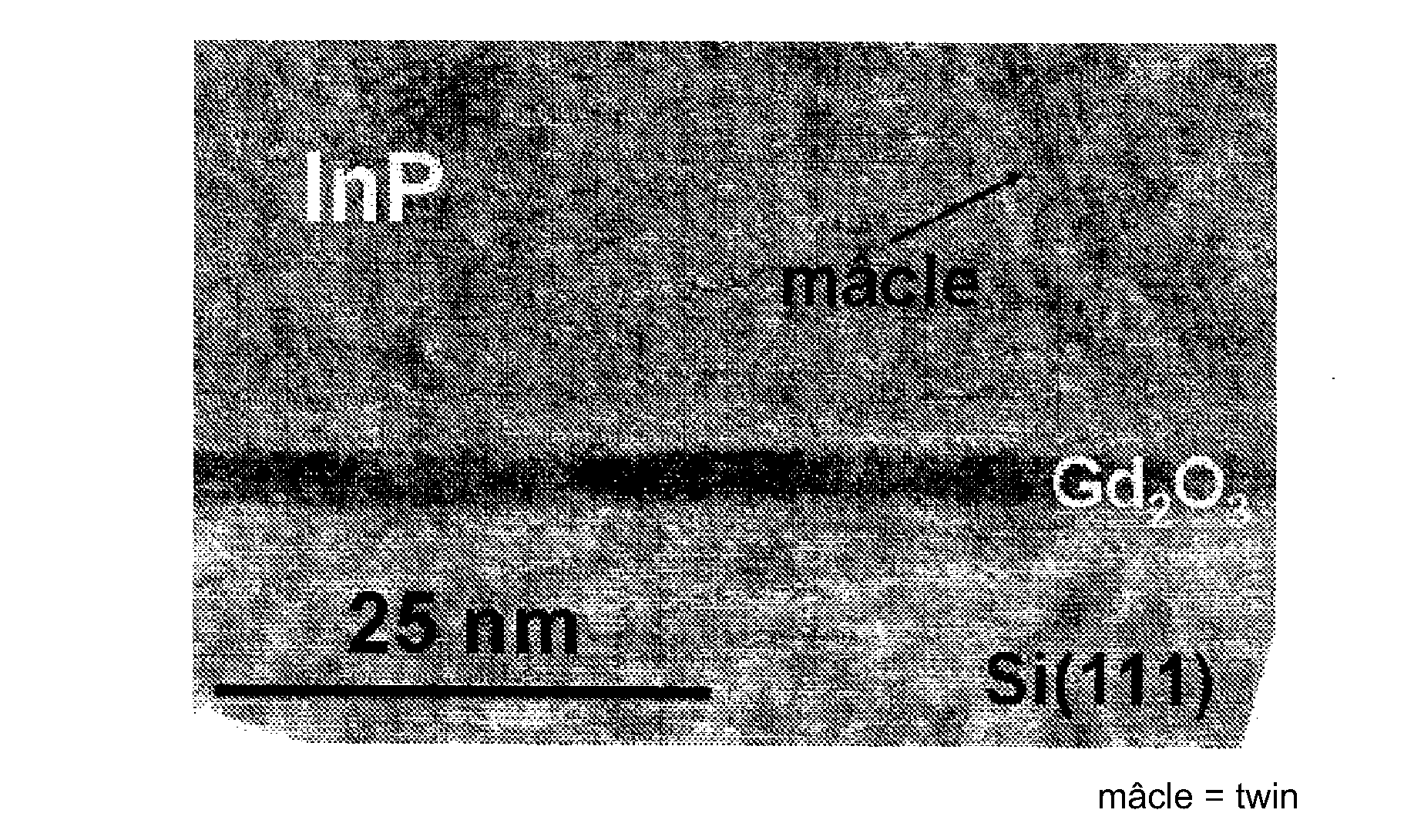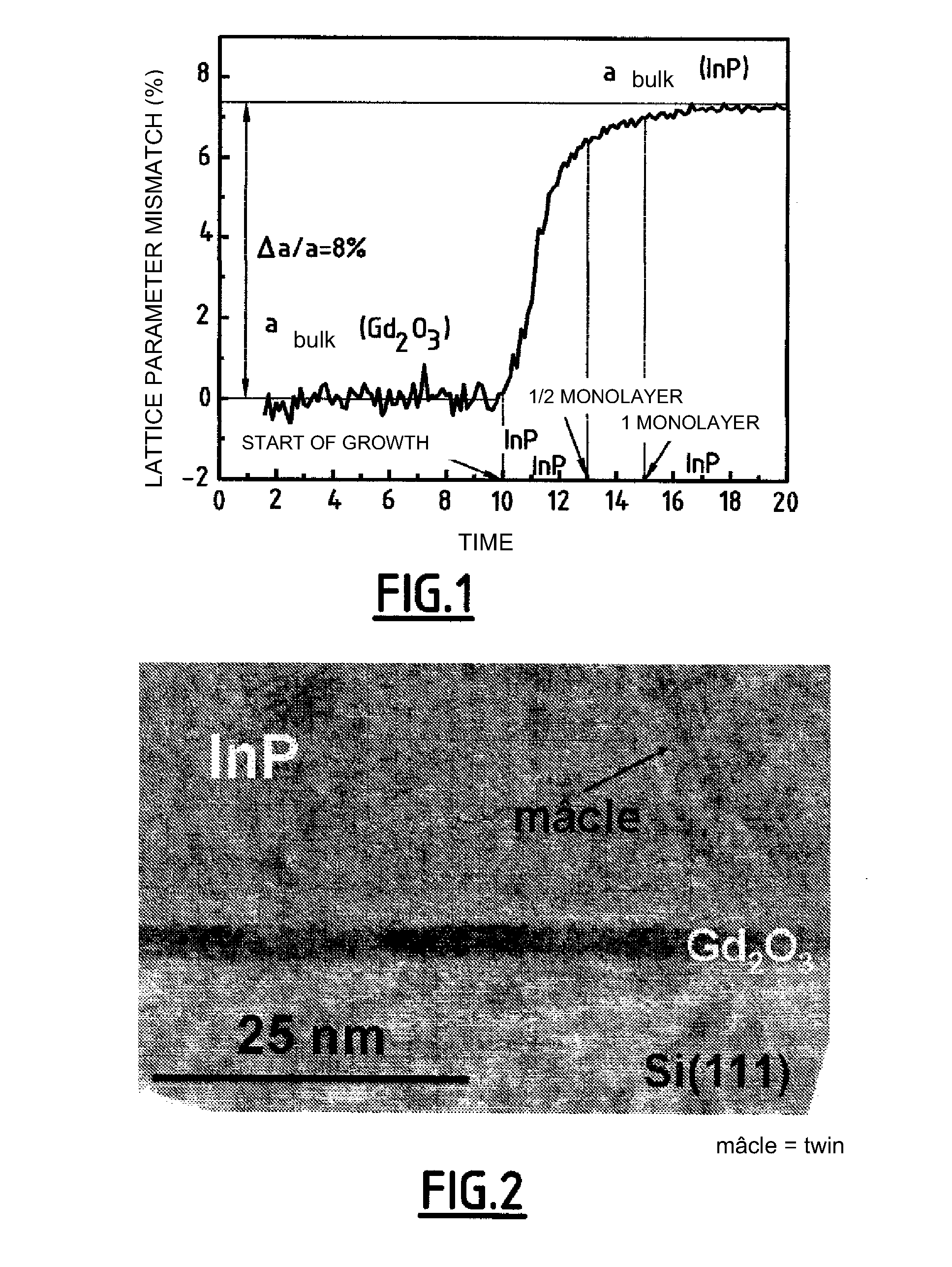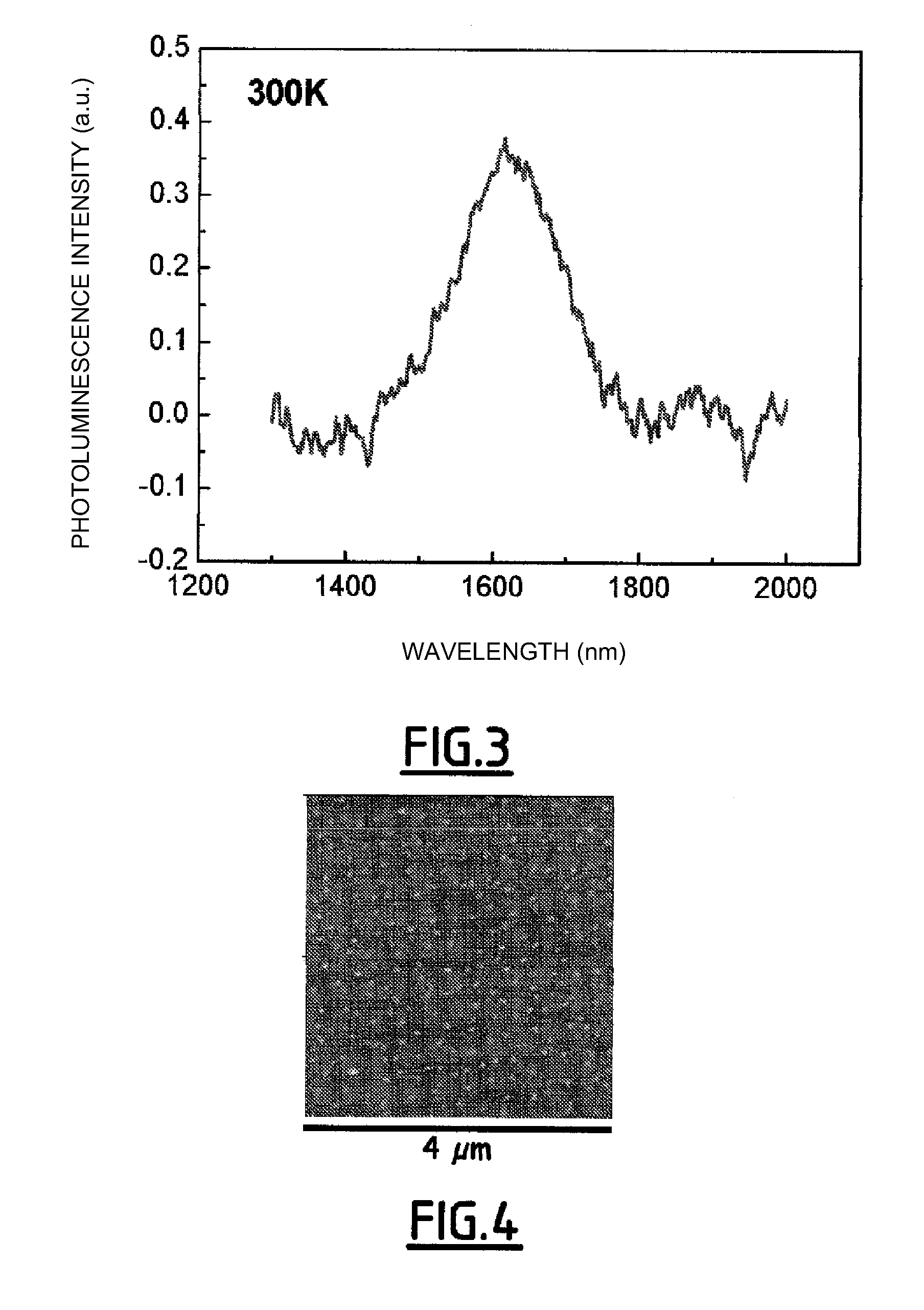Epitaxial solid-state semiconducting heterostructures and method for making same
- Summary
- Abstract
- Description
- Claims
- Application Information
AI Technical Summary
Benefits of technology
Problems solved by technology
Method used
Image
Examples
example 1
[0105]Preparation of a Semiconducting Heterostructure (InAsP,InP) / Gd2O3 / Si111
[0106]An Si(111) substrate (obtainable from ACM, France) is subjected to cleaning comprising immersion for 10 seconds in a bath of pure NI4F followed by rinsing with deionized water and drying, before it is immediately introduced into a modified RIBER 2300 chamber for the growth of oxides by molecular beam epitaxy.
[0107]A thickness of 4 nm of Gd2O3 is deposited on the substrate by evaporating a Gd2O3 target by means of an electron gun at a temperature of 700° C., a partial oxygen pressure of 10−6 torr being adjusted. A strained monocrystalline Gd2O3 layer of excellent quality is obtained.
[0108]The substrate so coated is then removed from the RIBER 2300 chamber and introduced into a connected system, under an ultrahigh vacuum, comprising a chamber for cleaning under O2 and a molecular beam epitaxy device (RIBER 32 chamber). Treatment under molecular oxygen (pressure 10−5 torr) is carried out in the cleaning ...
example 2
[0121]Preparation of a semiconducting heterostructure InP / SrTiO3 / Si(001)
[0122]A layer of SrTiO3 is deposited by molecular beam epitaxy in a RIBER 2300 chamber on an Si(001) substrate supplied by STMicroelectronics and previously cleaned as in Example 1.
[0123]The surface of the Si is first treated by forming a monolayer of SrO. To that end, the temperature of the substrate is brought to 550° C. and its surface is exposed to a strontium pressure of 5.10−8 torr for 3 minutes. The substrate is then brought to 750° C., which causes the stabilization of ⅓ of a monolayer of Sr at the surface of the silicon. The temperature of the substrate is then brought to 550° C. again, and the substrate is exposed to the same flow of strontium until ½ monolayer is obtained. Finally, the temperature of the substrate is brought to the growth temperature of SrTiO3 (from 350 to 400° C.), and the surface is exposed to a partial oxygen pressure of 5.10−8 torr in order to oxidize the ½ monolayer of strontium ...
PUM
 Login to View More
Login to View More Abstract
Description
Claims
Application Information
 Login to View More
Login to View More - R&D
- Intellectual Property
- Life Sciences
- Materials
- Tech Scout
- Unparalleled Data Quality
- Higher Quality Content
- 60% Fewer Hallucinations
Browse by: Latest US Patents, China's latest patents, Technical Efficacy Thesaurus, Application Domain, Technology Topic, Popular Technical Reports.
© 2025 PatSnap. All rights reserved.Legal|Privacy policy|Modern Slavery Act Transparency Statement|Sitemap|About US| Contact US: help@patsnap.com



